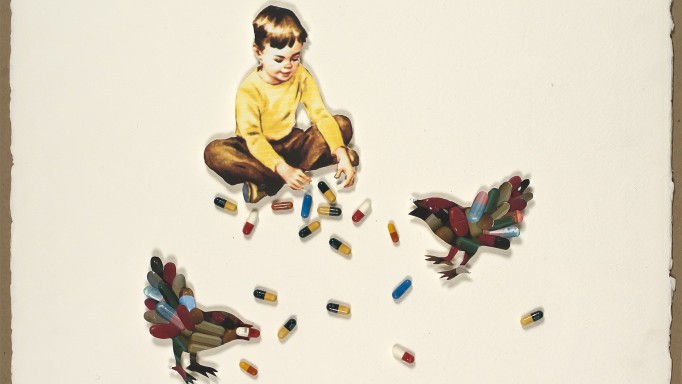Write a Comment
12 Comments
I tried to respond to this latest appalling misrepresentation when it was first posted but was stymied by POZ's blog software. David Gisselquist writes 'The Shisana study you brought into this discussion reports that surrogate breastfeeding is a bigger risk for a child to be HIV-positive than having an HIV-positive mother. The study team could have tested this surprising claim by tracing and testing surrogate breastfeeders as well as other children visiting suspected clinics and hospitals.' This again offers insight into Gisselquist's mode of operation. The claim in the first sentence is NOT TRUE. It is based on either his inability to understand the paper, or his desperation to misrepresent it in order to pretend it somehow supports his position. Worse, in the next sentence he tries to offload his own misrepresentation onto the paper's authors, writing that it is THEIR 'surprising claim.' THEY MADE NO SUCH CLAIM. These misleading sleights of hand are typical of his writings. If you read the paper, the data unequivocally show that the 'bigger risk for a child to be HIV-positive' is having an HIV-positive mother. Out of 1014 children born to HIV-positive mothers, 477 (47%) were HIV-positive. Out of 2457 children born to HIV-negative mothers, 7 (0.28%) of were HIV-positive. 477 is much bigger than 7, and 47% is much bigger than 0.28%. Furthermore, the authors report the odds ratio for the association between being HIV positive and 'having been breastfed by a non-biological mother' among the children with HIV-positive mothers - it is 5 (95%CI 2.3-10.8), far lower than the odds ratio for the association with having an HIV-positive mother which is 310 (95%CI 148-781). The seven HIV-positive children with HIV-negative mothers cannot have an odds ratio calculated for the association between infection and having an HIV-positive mother because they don’t have HIV-positive mothers. In this group, the odds ratio for the association between breastfeeding by a non-biological mother and being HIV-positive is 437 (95%CI 53-5020). Gisselquist is trying to make something of the fact that this number is numerically higher than 310 in the other group when this is a totally specious comparison. It reveals a complete misunderstanding of--and worse, willingness to abuse--the use of odds ratios. In his own blog post on the subject, he makes the common mistake of confusing odds ratios with relative risk by stating 'According to these data, breastfeeding with another women increased the child’s risk to be HIV-positive by 437 times.' Gisselquist also fails to note the key difference between this paper and the other reports he tries to cite in support of his views - it involves DNA analyses of biological mother-child relationships. It is both mystifying and depressing to me that Joe Sonnabend, who I'm sure understands these issues far better than I do, is collaborating with this person.
Richard, Your concern about HIV transmission from surrogate breastfeeders to babies is well taken. I have revised dontgetstuck to include that message: http://dontgetstuck.wordpress.com/child-to-mother-transmission-risks-and-prevention/ But we still have the question: How important is surrogate breastfeeding as a risk for HIV in children? The Shisana study you brought into this discussion (http://www.hsrc.ac.za/Research_Publication-18534.phtml) reports that surrogate breastfeeding is a bigger risk for a child to be HIV-positive than having an HIV-positive mother. The study team could have tested this surprising claim by tracing and testing surrogate breastfeeders as well as other children visiting suspected clinics and hospitals. Tracing infections to find their source is decades overdue in Africa. I invite you to join me and others in calls for tracing to find the risks that infect so many children and adults. David
And that's exactly the type of shameful disingenuousness that renders you an untrustworthy and non-credible source. You've been well aware of these data for years, your omission of any reference to them is deliberate. The dense, technical nature of your oeuvre often renders what you do opaque to most readers, so what you did in your comment above is usefully illustrative because it is so transparent. Even the abstract of the paper , posted here, lists the odds ratios for the *associations* with HIV infection in the *seven* children identified. I don't think it requires expertise in odds ratios to appreciate that the first one--breastfeeding by a non-biological mother, with an odds ratio of 437--is a massively stronger association than the other three, where the ratios range from 26-37. How do you handle this in your comment? In order to avoid addressing the huge differences in the odds ratios, you write that the paper "reports four significant risks for HIV in children with HIV-negative mothers (adjusted OR > 1." The sleight of hand of grouping them only based on whether the odds ratios were greater than 1 then allows you to list them in your preferred order, rather than in order of the magnitude of the associations (as the authors did). And you performed this manipulation just for the purposes of a comment on a blog. The figures also aren't adjusted, because there were two few children with HIV-negative mothers: "As only seven of the children with an HIV-negative mother were HIV-positive, it was not possible to adjust the odds ratios for potential confounders among children with HIV-negative mothers."
It's relevant to point out some details of the peer-reviewed Shisana paper. It identifies seven HIV-positive children with HIV-negative mothers, compared with 477 with HIV-positive mothers: "Of the 1014 children with HIV-positive mothers, 477 (47%) were HIV-positive. As anticipated, the factor most strongly associated with HIV infection among children was having a mother who was HIV-positive (OR: 310; 95%CI: 148-781). However, of the 2457 children with HIV-negative mothers, seven (0.28%) were HIV-positive." The paper lists the odds ratios for the factors significantly associated with seropositivity in these seven children, in order of magnitude. Even in his internet comment above, David Gisselquist is unable to stop himself reversing this order to place the putative injection risk first, and omitting reference to the size of the odds ratios involved. The desire to obfuscate seems reflexive. But as can be seen from the abstract above, the odds ratio associated with breast feeding by a non-biological mother was massively higher than the other three: "Transmission in this group was significantly associated with breastfeeding by a non-biological mother (OR: 437; 95%CI: 53-5020)" Which is consistent with the DNA-confirmed case report in the Aug 18 issue of the Lancet: http://www.thelancet.com/journals/lancet/article/PIIS0140-6736(12)60957-X/fulltext Furthermore, I don't think anyone would deny the importance of safe dental practice, but the paper also shows that many children in this study had been exposed to dentists and dental injections without acquiring infection: "Exposure to dentists and dental injections was slightly higher with 210 (8.7%) of children visiting a dentist and 60 (2.4%) receiving dental injections." Not only does David Gisselquist not mention this paper on his "Don't Get Stuck" website, he also--as far as I can tell--omits any reference to it in his updated online book "Points to Consider" despite the fact that it discusses the issue and cites other work by the same author (and includes citations up to 2009): https://sites.google.com/site/davidgisselquist/chapter9
Richard, As I note above, the study you brought into this discussion reports that injections and dental care are related to HIV in kids aged 2-7 years with HIV-negative mothers. Another paper from the same study documents reuse of bloody instruments in dental care (see: http://www.ncbi.nlm.nih.gov/pubmed/17433494). There is so much evidence of suspected nosocomial HIV infections in kids in Africa that I don't try to list it all in dontgetstuck. In the same way if I wrote about rainfall in Africa, I couldn't list all the thunderstorms. Too many. David
What was the explanation for the omission of the paper from your website David? I don't see it in your comments.
(continued from previous comment) No government in sub-Saharan Africa has investigated any of thousands of identified HIV-positive children with HIV-negative mothers by tracing and testing other children who visited the same health facilities (as was done in Russia in 1988-89 to find >260 children infected; in Libya in 1998-99 to find >400 children infected; and in other countries outside sub-Saharan Africa). There is nothing Duesbergian about advocating safe health care for Africans, and extending to Africans the same warnings about unsafe health care that UNAIDS gives to UN employees (see page 9 in this link: http://whqlibdoc.who.int/unaids/2004/9291733717_eng.pdf) In more than 20 published papers I report that HIV from sex and skin-piercing procedures infects and kills far too many Africans. Let's work together to stop it. Regards, David










David Gisselquist
Hi Richard and others following this exchange: Let’s not get distracted. The point that Joseph makes in the blog post that started these comments is that unexpected HIV infections in children in sub-Saharan Africa (with HIV-negative mothers) have not been adequately investigated. An adequate investigation involves tracing and testing other children attending suspected health care facilities. In Russia, Romania, Libya, and other countries, governments have investigated unexpected HIV infections in children in that way – eg, an investigation in Russia in 1988-89 found more than 260 children infected through hospitals. Similarly, in the US, investigations to find bloodborne infections from health care have been common over the past decade and have found lots of HBV and HCV infections. When a child is found to be HIV-positive with an HIV-negative mother, we can speculate that the child might have gotten HIV from some source other than health care – eg, surrogate breastfeeding. But if it’s possible the HIV came from health care, the government should trace and test other children attending suspected facilities. Did the facilities infect other children? Is health care safe? Speculation about other risks does not answer these questions. Investigations are required. Finally, let’s review the curiously high risk to transmit HIV through surrogate breastfeeding according to data reported in Shisana et al (see Table 3 in: http://sun025.sun.ac.za/portal/page/portal/UIPC/Downloads/HIV%20exposure%20of%20children%20in%20HCF.pdf). The article reports: 15 children with HIV negative mothers breastfed with other women; 4 of these 15 children were HIV-positive; and an odds ratio = 437 to get HIV associated with surrogate breastfeeding. These data suggest that all 4 HIV-positive children with HIV-negative mothers who breastfed with other women got HIV from surrogate breastfeeding. That’s a curious result: Based on HIV prevalence among women in the community, only 5 (1/3) of 15 surrogate breastfeeders would have been HIV-positive, so the efficiency of HIV transmission from surrogate breasfeeders to children would be circa 80% (5 infected women infect 4 children). That’s much greater than the 35% rate of transmission from HIV-positive mothers to babies delivered and breastfed for 2 years without antivirals. The study team did not investigate and clarify their reported high risk to transmit through surrogate breastfeeding by tracing and testing surrogate breastfeeders and sequencing viruses. Regards, David
November 22, 2012